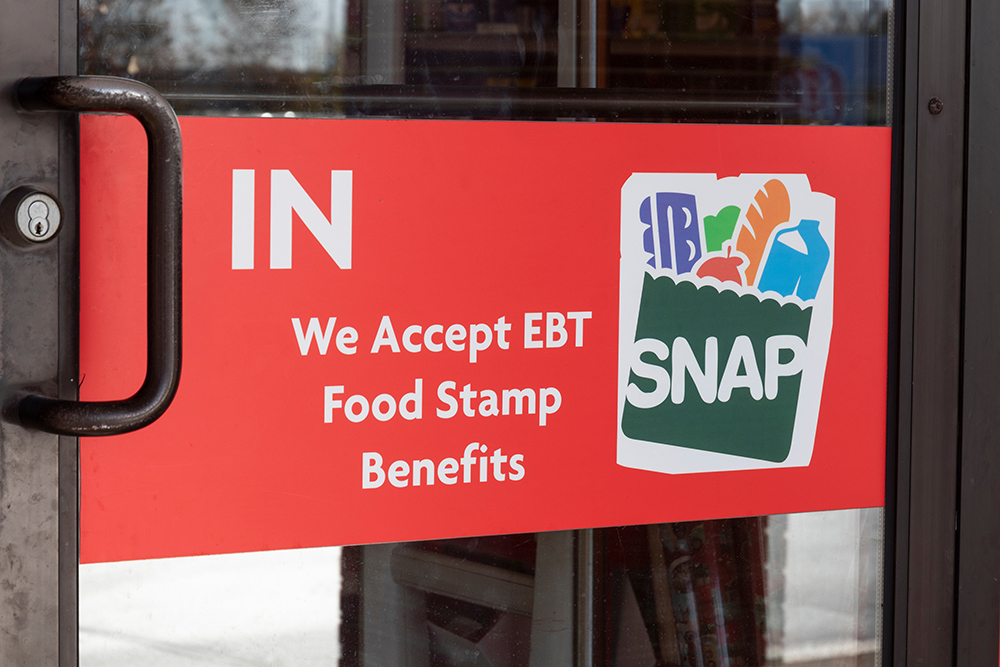Los funcionarios estatales de salud lanzaron el año pasado un primer proceso de licitación competitivo para sus contratos de seguro de Medi-Cal, con el objetivo de implementar estándares más altos. Pero cuando se anunciaron los ganadores, varias aseguradoras se quejaron del proceso y del posible impacto en la atención al paciente
by Kristen Hwang and Ana B. Ibarra
En un cambio de postura significativo, el Departamento de Servicios de Atención Médica de California anunció que ha negociado con cinco planes de salud comerciales para brindar servicios de Medi-Cal en 2024, eliminando un proceso de licitación de dos años para los codiciados contratos estatales.
Esto anula los planes anteriores del estado de otorgar contratos a solo tres planes de salud. Significa que es probable que más afiliados a Medi-Cal conserven su aseguradora y sus médicos actuales, lo que evitará un proceso de reinscripción confuso para la mayoría de los afiliados y evitará interrupciones en la atención del paciente. También significa que el estado evitará una batalla legal prolongada en medio de amenazas de juicio por parte de aseguradoras que anteriormente se habían quedado fuera.
Los grandes ganadores: Blue Shield y Community Health Group obtendrán un contrato después de haber perdido ofertas inicialmente, y Health Net podrá conservar al menos algunos de sus afiliados de Los Ángeles.
“Para brindar certeza a los miembros, proveedores y planes, el Estado usó su autoridad para trabajar directamente con los planes para volver a trazar nuestra asociación y avanzar con confianza y rapidez hacia la implementación de los cambios que queremos ver”, dijo el departamento en un comunicado publicado el viernes por la tarde. El departamento no proporcionó respuestas a las preguntas de seguimiento antes de esta publicación.
“En cierto nivel, facilita la transición, pero queremos hacerlo mejor que el statu quo”, dijo Anthony Wright, director ejecutivo de Health Access, un grupo de defensa del consumidor. “Menos interrupciones es bueno, pero no queremos perder la razón del cambio, que es tener más responsabilidad sobre estos planes en el futuro”.
Medi-Cal brinda cobertura de salud a más de 14 millones de californianos de bajos ingresos, más de un tercio de la población del estado. En 2021, el Departamento de Servicios de Atención Médica, que supervisa el programa Medi-Cal, se embarcó en un proceso de licitación que le permitiría modificar los contratos con los planes de salud comerciales de Medi-Cal. El objetivo del estado era reducir la cantidad de planes de salud participantes de los nueve actuales y seguir adelante con solo los planes más calificados, que se someterían a estándares más altos relacionados con los resultados de los pacientes, los tiempos de espera y la satisfacción, además de mejorar las disparidades de salud. En agosto del año pasado, el estado anunció que otorgaría tentativamente $14 mil millones en contratos de Medi-Cal a tres compañías: Health Net, Molina y Anthem Blue Cross. Esta decisión propuesta obligaría a cerca de 2 millones de afiliados a Medi-Cal a cambiar de seguro y probablemente encontrar nuevos proveedores. Algunos proveedores de salud criticaron la decisión del contrato original del departamento, alegando que habría causado una interrupción “inconmensurable” en la atención.
Kaiser Permanente negoció un contrato especial con el estado a principios del año pasado, sin pasar por el proceso de licitación. Y la mayoría de los planes de salud comunitarios sin fines de lucro no tenían que competir por un contrato.
El anuncio de verano del estado rápidamente se convirtió en polémico ya que los planes de salud que quedaron fuera cuestionaron el proceso del estado para elegir a las tres aseguradoras, apelaron la decisión y demandaron al estado.
Este cambio de rumbo pone en entredicho el poder que pueden tener las aseguradoras para presionar con amenazas legales la acción estatal. Los defensores de la salud dicen que esperan que no siente un precedente. Wright en Health Access dijo que le gustaría que el departamento dejara en claro que el estado no retrocederá en el proceso de contratos competitivos en el futuro, ya que considera que es una herramienta clave para la rendición de cuentas.
Blue Shield, una de las compañías de seguros inicialmente excluidas, presentó una queja contra el Departamento de Servicios de Atención Médica, solicitando que el departamento divulgue todos los documentos utilizados en el proceso de selección.
El gigante de los seguros incluso lanzó una campaña en el otoño pidiendo a los californianos que hablaran en contra de la decisión del estado. La compañía argumentó que el estado no logró involucrar suficientemente a los afiliados y médicos de Medi-Cal en el proceso. “El mensaje de esta campaña es que no es demasiado tarde para que el estado cambie de rumbo y tome decisiones que promuevan la innovación y la equidad en la salud para todos”, dijo en un comunicado Kristen Cerf, presidenta y directora ejecutiva del plan Medi-Cal de Blue Shield. en octubre.
Según el acuerdo revisado, Blue Shield podrá seguir prestando servicios en el área de San Diego. Blue Shield rechazó una solicitud de entrevista y, en cambio, remitió a los periodistas a un comunicado publicado el pasado martes.
Mientras tanto, Health Net, que en el verano obtuvo tentativamente contratos en nueve condados pero perdió su contrato anterior y más grande en Los Ángeles, también demandó al estado. Según el nuevo acuerdo, Health Net permanecerá en Los Ángeles y dividirá su parte de los afiliados a Medi-Cal en partes iguales con su contraparte comercial, Molina Healthcare. Health Net también mantendrá su membresía en Sacramento pero perderá el mercado de San Diego.
Centene, la empresa matriz de Health Net, dijo en un comunicado el martes que pondría fin a sus acciones legales contra el departamento de servicios de salud del estado.
La división equitativa de los miembros entre Molina y Health Net a través de un acuerdo de subcontratación es un “paso en la dirección correcta”, dijo Jim Mangia, presidente y director ejecutivo de St. John’s Community Health, que atiende a pacientes de bajos ingresos en el sur de Los Ángeles, pero mucho más permanece incierto.
“¿Quiénes serán el 50 por ciento que podrá permanecer en Health Net y quiénes serán el 50 por ciento que tendrá que mudarse?”, dijo Mangia. “No tenemos respuestas para eso, así que creo que es problemático porque todavía desplaza a una cantidad significativa de pacientes”.
Actualmente, Health Net administra más de 1 millón de pacientes de Medi-Cal en el condado de Los Ángeles. Casi una cuarta parte de los pacientes de St. John’s Community Health tienen Health Net, y el LA Care Health Plan, administrado públicamente, representa el resto. (La mayoría de los angelinos con Medi-Cal están inscritos y podrán continuar con LA Care, un plan operado públicamente).
Mangia dijo que la última decisión aún interrumpirá los servicios para los 12,500 pacientes solo en St. John’s que se verán obligados a cambiarse a Molina. Anticipa que la clínica necesitará contratar más personal para ayudar con la orientación de los pacientes, pero no hay dinero para eso.
“Obviamente fue un intento de rectificar la decisión inicial, pero no estoy seguro de que el impacto en los pacientes vaya a ser tan diferente. Esa es mi preocupación”, dijo Mangia. “Es esencialmente un mandato sin fondos”.
“Con eso como entendimiento, pensamos que lo mejor para la compañía, para los miembros y para los inversionistas era participar en la negociación”, dijo Zubretsky.
Molina acordó no protestar por la adjudicación final del contrato y subcontratará a Health Net en el condado de Los Ángeles en el “acuerdo negociado”, dijo Zubretsky. Molina duplicará su membresía de Medi-Cal, de 600,000 a 1.2 millones, para 2024 como resultado de este último contrato.
“Acordamos las asignaciones de membresía que el estado ahora ha articulado además de renunciar a otros tipos de derechos legales que uno normalmente tendría”, dijo Zubretsky a los inversionistas.
Community Health Group, el mayor proveedor de Medi-Cal en el condado de San Diego, también obtendrá un nuevo contrato en 2024. La aseguradora fue excluida en el anuncio original de verano, pero apeló la decisión del estado.
Community Health Group rechazó una solicitud de entrevista, pero durante el verano, el director de operaciones de la compañía, Joseph García, le dijo a CalMatters que la decisión del estado había sido impactante porque su compañía habitualmente superaba a otras aseguradoras.
Zara Marselian, directora ejecutiva de La Maestra Community Health Centers en San Diego, dijo que la nueva decisión del estado fue una grata sorpresa. Las clínicas de La Maestra atienden a pacientes de bajos ingresos en todo el condado y han trabajado con Community Health Group durante casi tres décadas. Alrededor del 26% de sus pacientes confían en Community Health Group para Medi-Cal, la mayoría de cualquier grupo de pacientes. Anteriormente, Marselian también había previsto tener que contratar más personal para ayudar a los pacientes a transitar la transición.
“Es realmente mejor para los beneficiarios de Medi-Cal que ahora no tendrán que transferirse a otro plan de salud y ver interrumpida toda la continuidad de su atención”, dijo Marselian. “Estoy muy agradecido sin embargo esto sucedió. Estoy muy agradecido en nombre de nuestros pacientes”.












